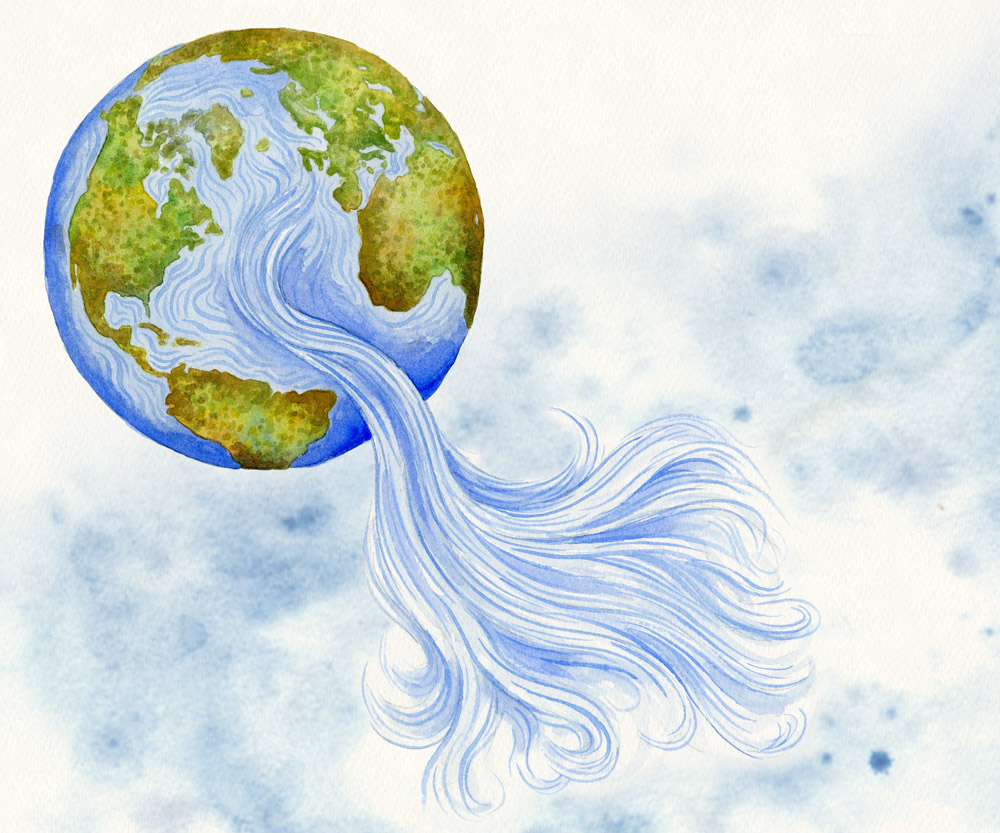THE SOURCE OF THE WATER that covers nearly three-quarters of Earth’s surface has long been a topic of debate amongst geologists and other scientists around the world. While some theories assert that water crashed to Earth aboard icy comets, researchers in the College of Arts & Science have found evidence suggesting it comes from deep inside the planet itself.
An international research team led by John Tse, a professor in the Department of Physics and Engineering Physics and Canada Research Chair in Materials Science, looked at whether chemical reactions inside Earth’s mantle could be the source of the planet’s massive water deposits.
“The origin of terrestrial water is a subject of intense interest,” says Tse. “Our study was motivated by the observation that hydrogen readily reacts with quartz under mild pressure and temperature conditions to form water.”
The idea that water could be formed within the planet was first put forth by Japanese researchers who performed the reaction in a laboratory in 2014. Tse and his team—which included physics phD student Xue Yong, Department of Geological Sciences Professor Yuanming Pan and collaborators in Ireland and China—sought to dig deeper into these findings.
The team created computer simulations of the process to reveal vivid details about why the reactions occur and what happens to the resulting products. Their simulations showed that the reactions create water, but that the water cannot escape from the quartz mineral in which it forms. As a result, pressure builds up and can reach as high as 200,000 times greater than Earth’s atmosphere. This intense pressure could potentially trigger quakes hundreds of kilometres below the surface, releasing the trapped water.
The findings raise an intriguing new possibility: that Earth makes its own water. If that is the case, water could still be forming in the planet’s mantle. Though the reactions occur deep inside the Earth, Tse says that the water could be carried to the surface by processes such as magma flows and volcanic eruptions.
However, exactly how much of Earth’s water was created this way—and how much potentially arrived from space—is still up for debate.
“We have more questions than answers,” says Pan. “A number of questions stemming from Tse’s study require and are worthy of follow-up investigations.”
The team’s research is published in the March 1 issue of Earth and Planetary Science Letters.
